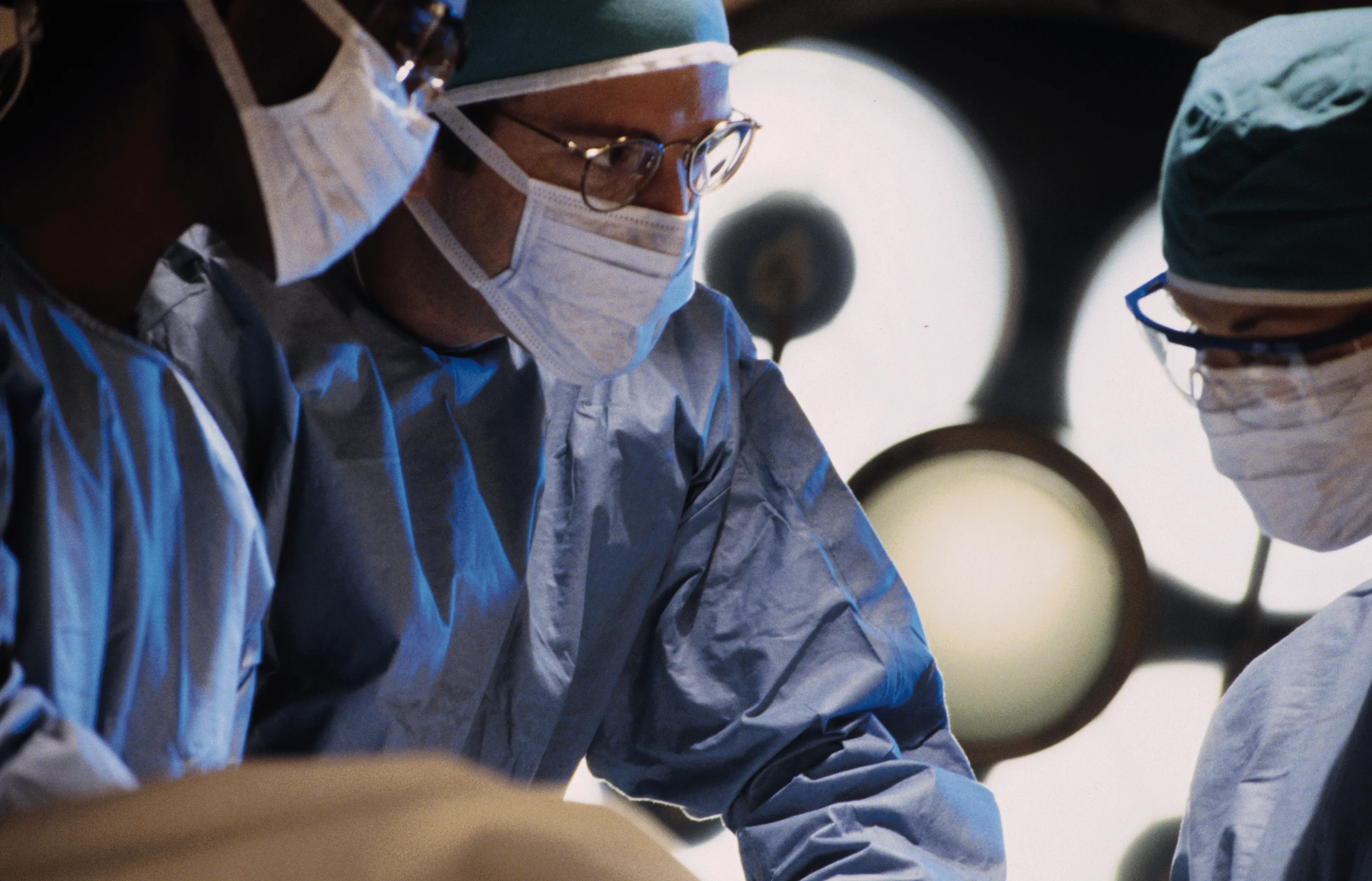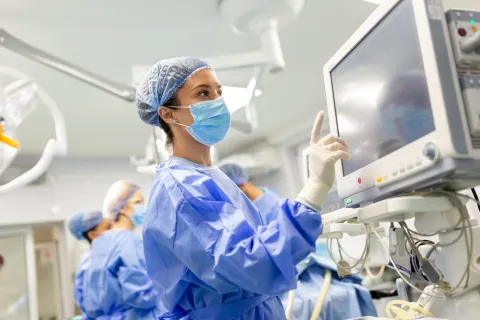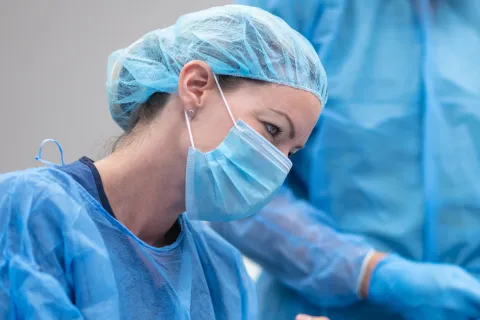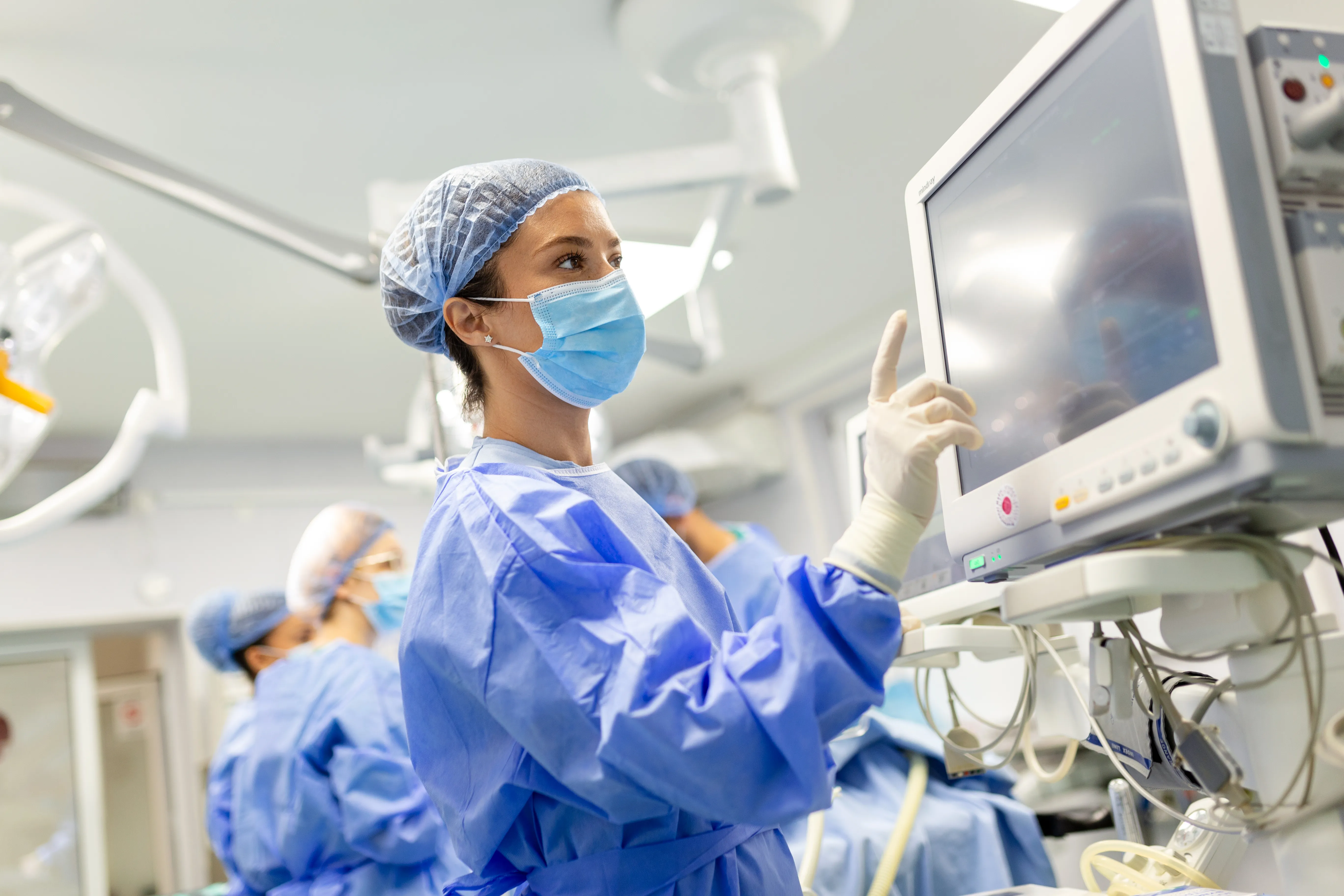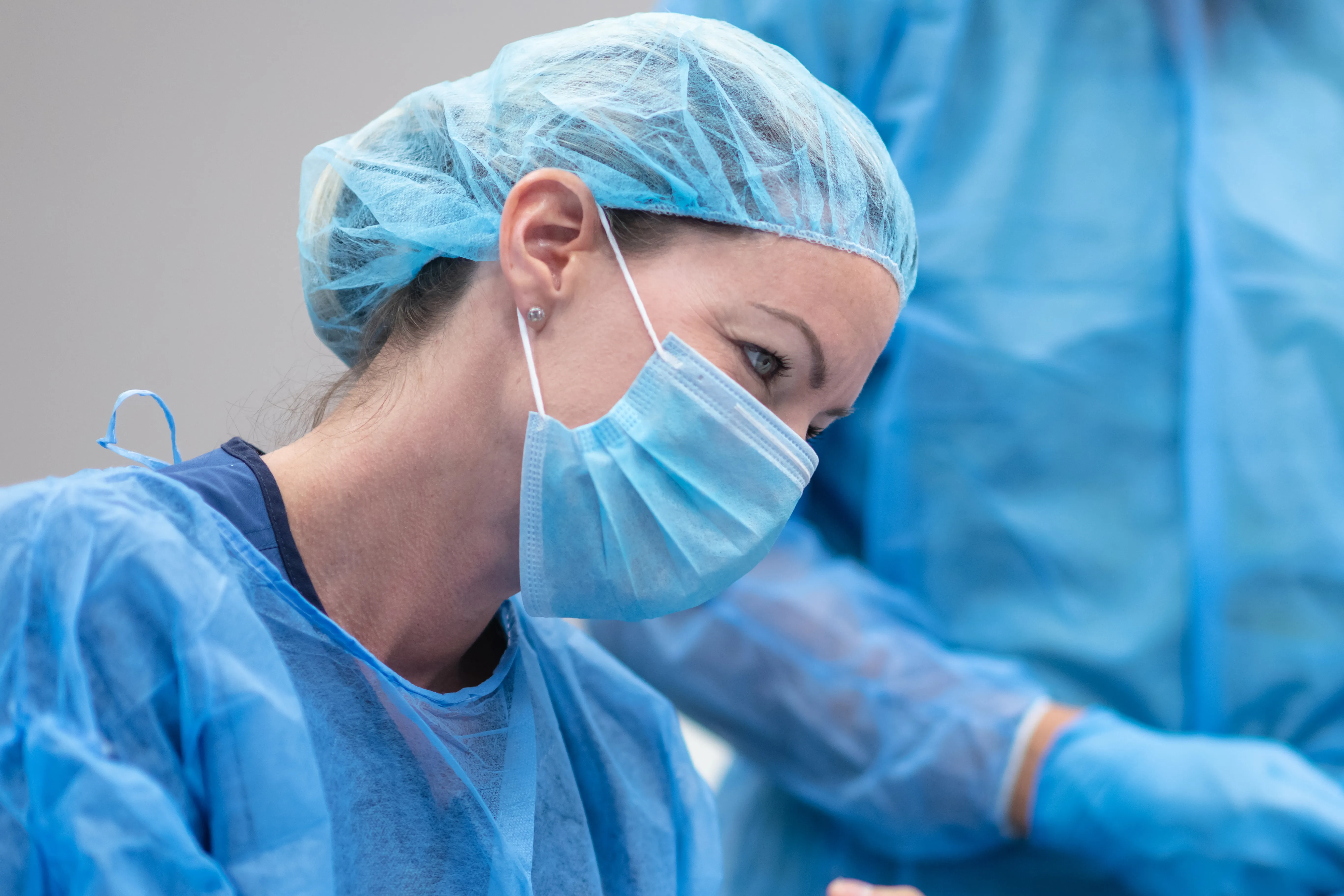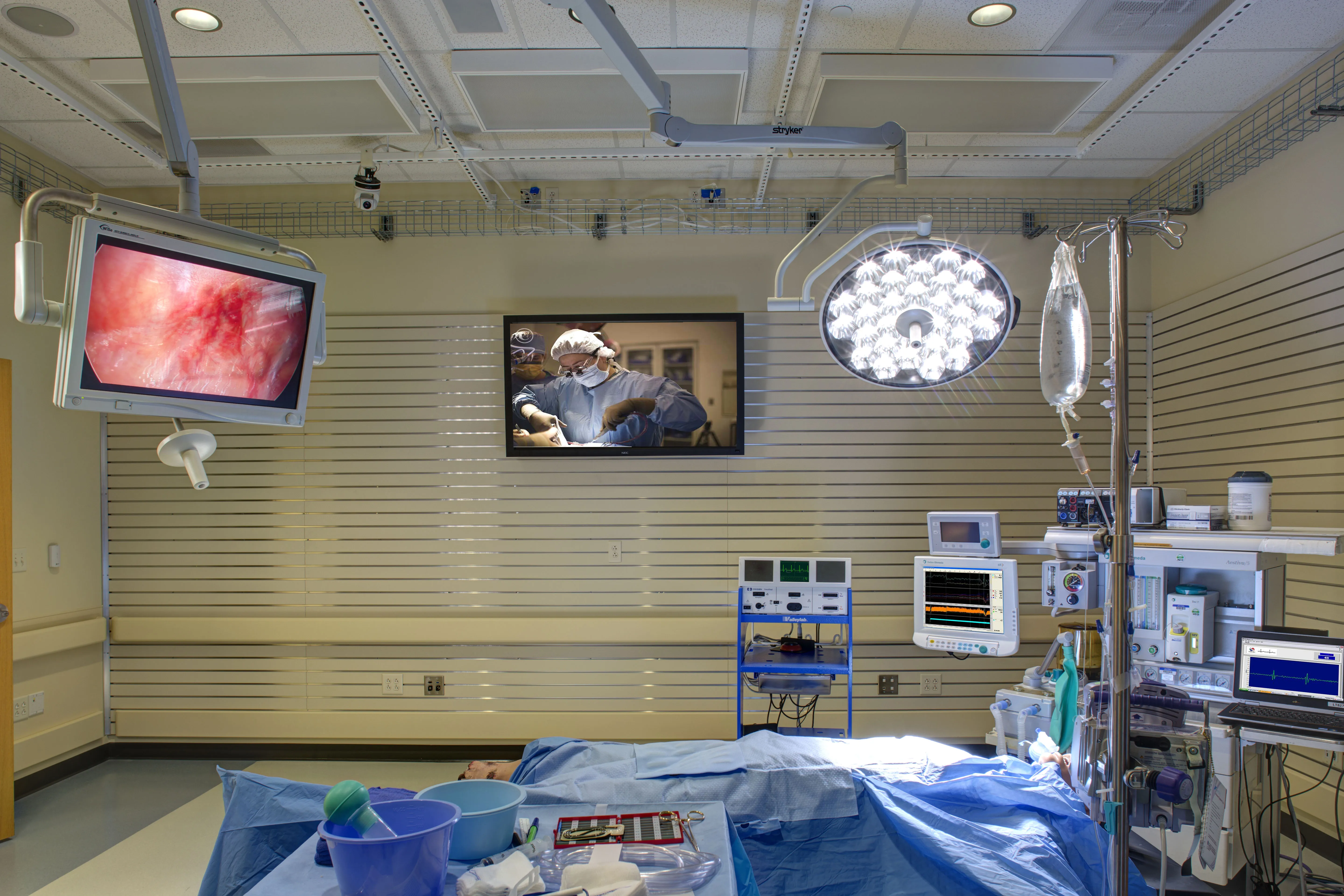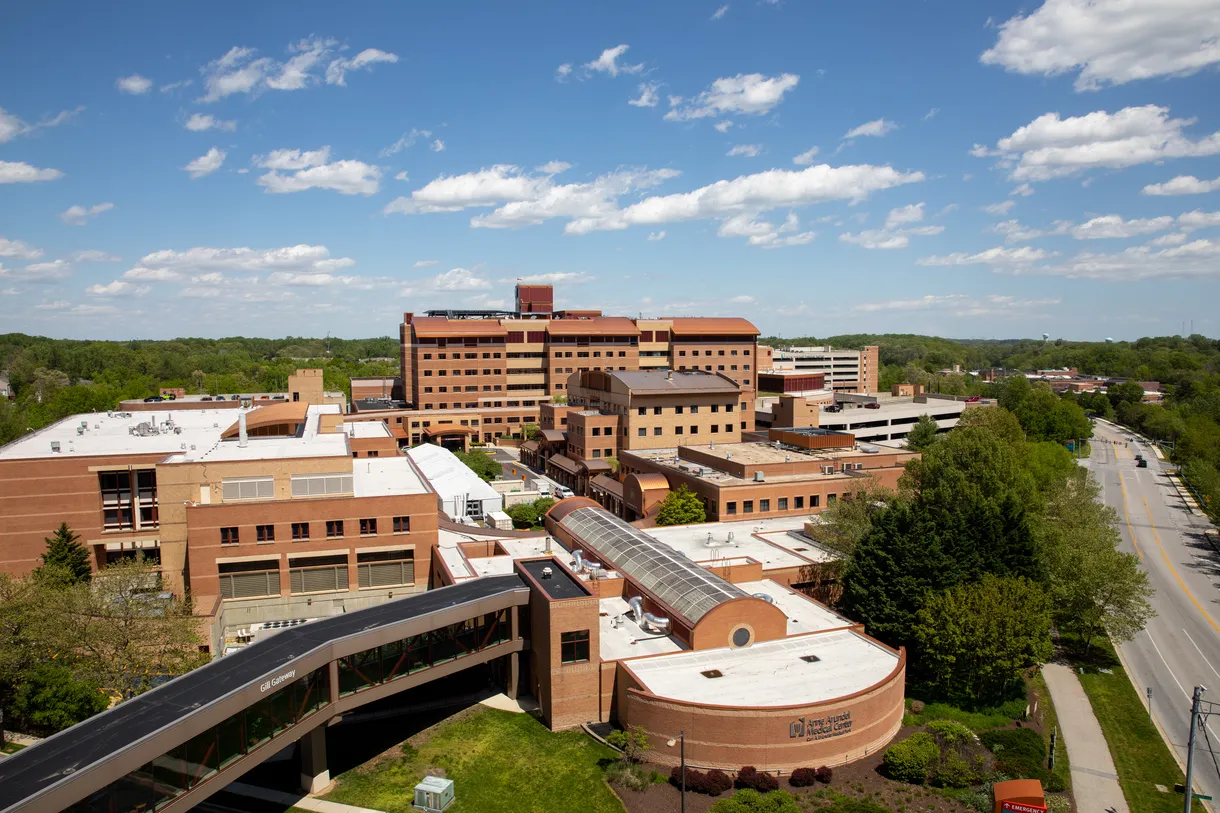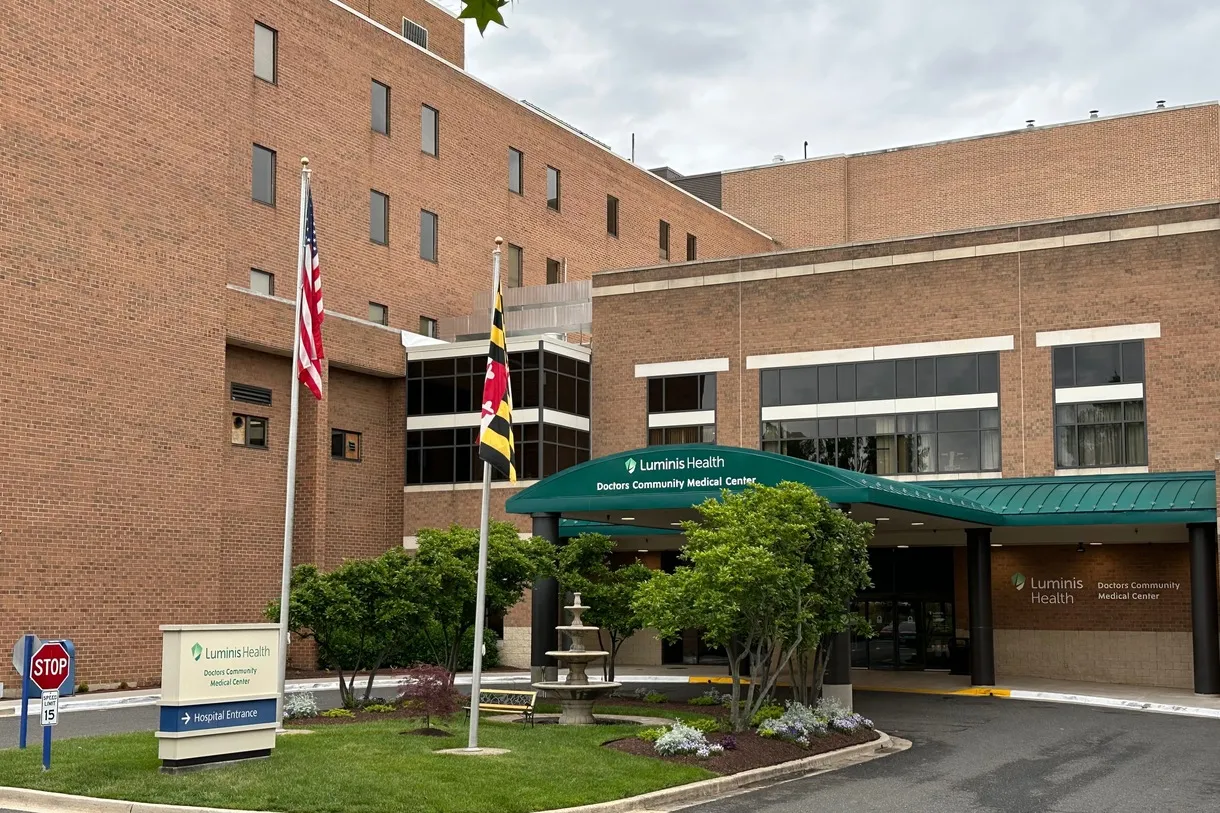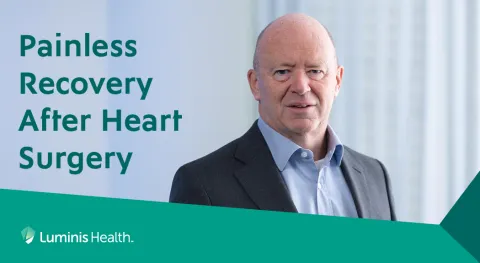Leading the Way in Robotic Surgery: Excellence, Innovation, and Patient-Centered Care
Why Choose Luminis Health for Robotic Surgery?
The robotic surgery program at Luminis Health puts the patient first by incorporating specialty trained and committed surgical teams to provide the highest quality surgical outcomes. Our multi-disciplinary team of specialists and care providers have extensive experience in robotic surgery and incorporate Enhanced Recovery protocols, ensuring patients experience less pain, lower risk of complications, reduced recovery times, and improved well-being.
When you need surgery, you don't have to travel far. Get expert, compassionate care close to home from surgeons who are leaders in their field.
Leaders in Robotic Surgery
As medical director of robotic surgery for Luminis Health, Dr. Nicholas Lambrou’s expertise in robotic surgery and his commitment to providing excellence in clinical care are at the forefront of our program’s mission. Dr. Lambrou proudly serves among other surgical leaders at Luminis Health and ranks among the top 1% of robotic surgeons worldwide by having performed over 5,000 robotic procedures.
Dr. Igor Belyansky, Chief of Surgery and Director of Abdominal Reconstruction program at Anne Arundel Medical Center, is widely recognized as an international expert in robotic abdominal wall reconstruction and hernia surgery.
